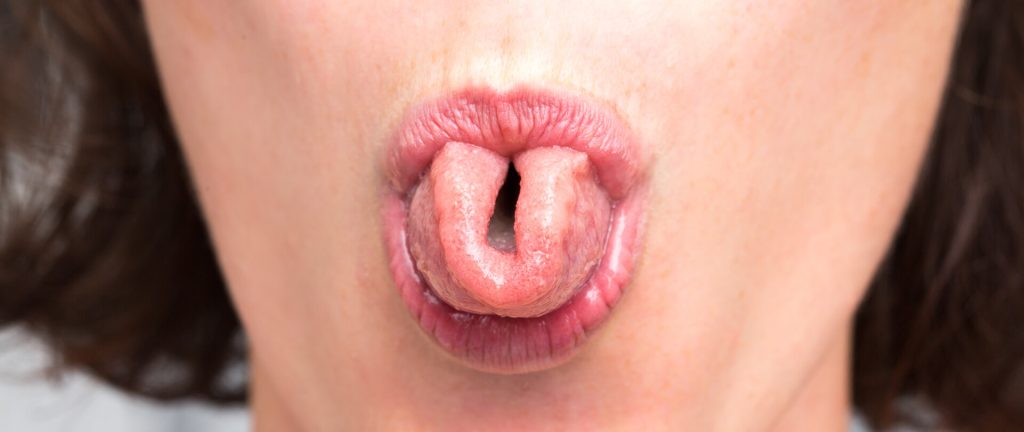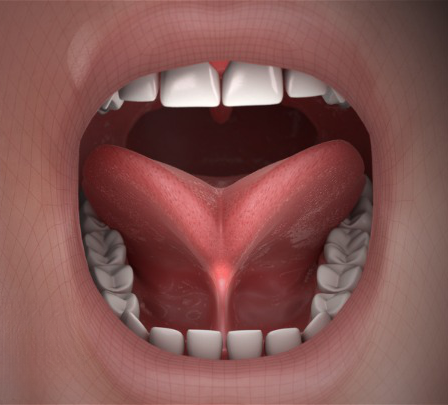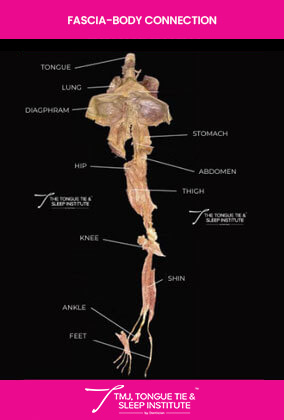TONGUE TIES & TMD
How Are Tongue tie and TMJ Disorders Related?
Tongue Tie Release
temporomandibular
disorder treatment

WHAT IS A TONGUE TIE?

How Are Tongue Tie And TMJ disorders Related?
The tongue performs many functions, including keeping the airway open (in compensation to which one starts mouth breathing, snoring, clenching and grinding their teeth), assisting with chewing, swallowing, and most importantly, facial and jaw development, speech and digestion. An open mouth, incorrect bite, clenching and grinding or constant compensations of the muscles while swallowing and speaking can result in Orofacial pain and TMJ dysfunction.
HOW IS THE TONGUE CONNECTED TO OUR BODY?
Headaches, shoulder, and neck pain commonly attributed to TMD or clenching or bruxing have been relieved by releasing the untreated tongue-tie. The ‘tied’ tongue can also lead to sleep-disordered breathing, leading to bruxing, as well as pain in the neck or upper back. Some adults also experience digestive and reflux problems, tightness in the chest, bow feet, tingling in calves and feet.

DIAGNOSING A TONGUE TIE
There are various related issues, such as airway complications, posture challenges, and sleep disturbances, that may arise due to tongue restriction. In certain cases, tongue ties may be found when identifying the causes of TMJ pain areas/ orofacial pain, clenching of teeth, disturbed sleep and breathing and poorly developed jaw growth and teeth alignment. It is also essential to note that a tongue tie cannot be self-diagnosed. A comprehensive functional assessment by a specialist of the tongue is essential to diagnose a tongue tie.
TREATING A TONGUE TIE
In our practice, we use the Functional Frenuloplasty procedure to release tongue ties for toddlers, children and adults. This approach has been adapted from Dr. Soroush Zaghi of The Breathe Institute, Los Angeles, who is a globally renowned ENT & sleep surgeon who has established this functional approach to tongue ties.
The success of our practice is based on our capability to deliver a comprehensive and successful release of tethered oral tissues. We achieve this success by implementing by multidisciplinary protocol that integrates myofunctional therapy (and also physical therapy in some instances) before, during, and after surgery. Our entire togue tie release procedure relies on precision, ensuring appropriate extent of tissue is released for maximum patient relief, neither excessive nor too little. Additionally, at TMJ, Tongue Tie & Sleep Institute we also do understand that TMJ patients require special care when opening their mouths for prolonged periods of time and have adapted the procedure to ensure minimal discomfort.
Undergoing Oral Motor Rehabilitation and Physical Therapy after your procedure is crucial to maintaining the released fascia and making sure the body and tongue can be re-trained on how to maintain this muscle- balance -posture. Our patients have also reported less TMJ pain after Myofunctional Therapy for their tongue ties.
Frequently Asked Questions
Seek Temporomandibular Disorder Treatment
Diagnosing a tongue tie on your own can be difficult, as it requires a comprehensive assessment of the tongue's function. It is always best to see a tongue-tie specialist for a proper diagnosis and treatment.
Speak To A Tongue Tie Specialist
OUR NON-INVASIVE SOLUTIONS FOR TMJ DISORDER & JAW
PAIN:
Blogs























